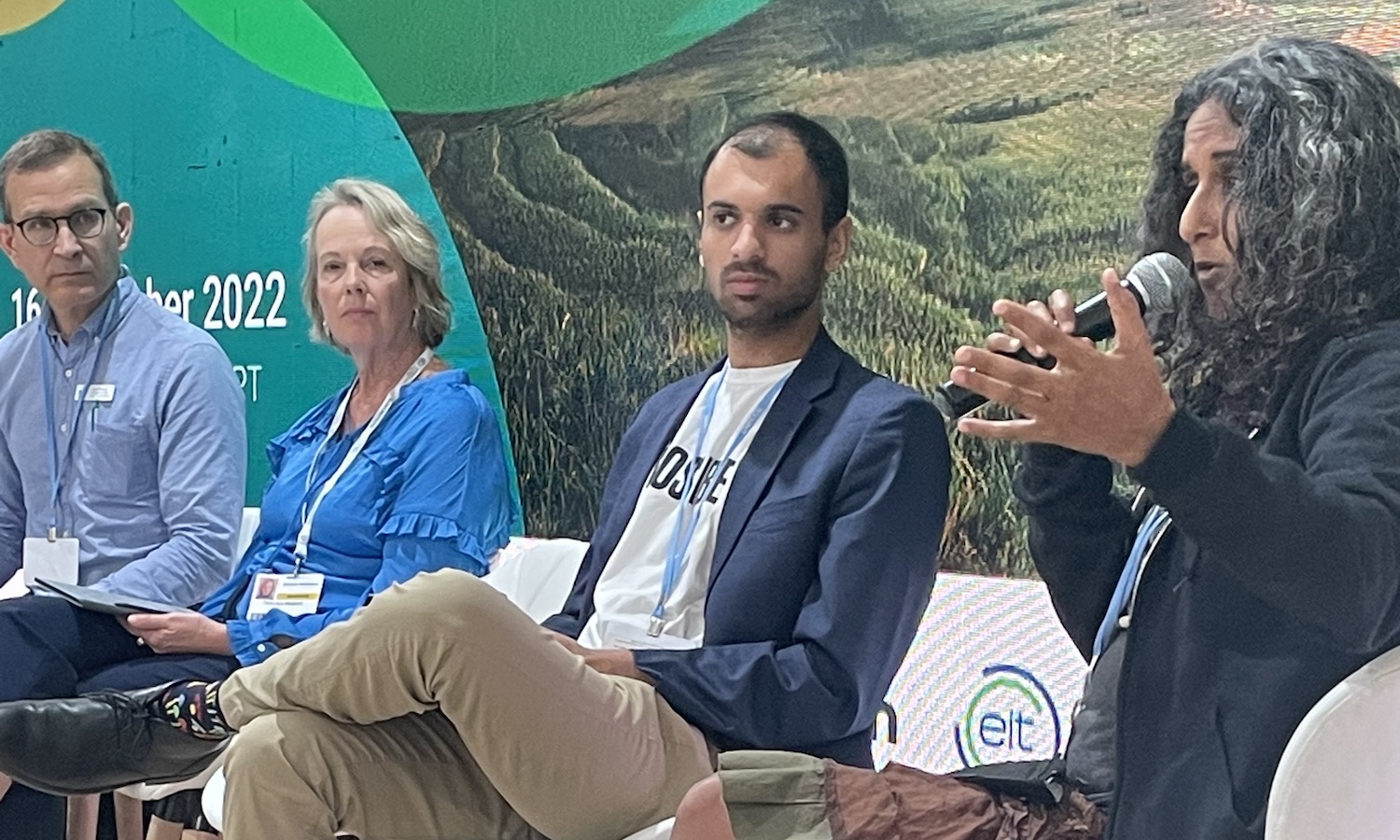During a recent session at the U.N. Climate Change Conference, alternative protein and regenerative agriculture advocates discussed strategies to address the biodiversity loss crisis. The conversation was organized by the Good Food Institute (GFI) in partnership with the Food Systems Pavilion.
According to WWF, the world has seen, on average, a 69 percent drop in mammal, bird, fish, reptile, and amphibian populations since 1970. In Latin American and the Caribbean, there has been a 94 percent decline in the last 50 years.
“A biodiverse ecosystem is a resilient one. When you have a single species that is the dominant species, it’s super susceptible to disease and other risks,” says Arjun Hausner, Impact Strategy Manager for Impossible Foods. But he notes that the world has “functionally replaced” biodiversity with three species for meat consumption: cattle, hogs, and chickens.
Animal agriculture — particularly beef production — is one of the largest drivers of this biodiversity loss, WWF finds, pushing food systems advocates to identify solutions that can reduce eaters’ impact on the environment.
“If we’re going to have a climate resilient planet, we need to make much more space for nature than there is now. How do we do that practically?” asks Jane Madgwick, CEO of Wetlands International. “We have to change our food systems.”
Dr. Rupa Marya, a physician and Executive Director of the Deep Medicine Circle, argues that the solutions lie with the Indigenous communities that have stewarded the land successfully for centuries. “The 5 percent of the human population that is Indigenous…currently stewards over 80 percent of the biodiversity on planet Earth,” Marya says.
This is why Marya and Madgwick focus on supporting and amplifying the solutions of Indigenous communities maintaining ecosystems.
“We can have restored ecosystems and more self-sufficient, food resilient local and Indigenous peoples,” Madgwick says. The two go hand in hand, “the choice is whether to invest in that or not.”
Changing in line with the values Marya is working to uphold, she says, means that eaters need to come to terms with the fact that, in many regions, it is necessary to eat less meat. “Human beings will have to learn how to live in ways that are consonant with the realities of the Earth and what it can sustain and what it can’t sustain.”
But alternative protein advocates believe that pushing for this type of behavior change is no longer an option. “We’ve been begging people to eat less meat. It hasn’t been working,” argues Bruce Friedrich, CEO & President of The Good Food Institute.
Friedrich says that consumption of meat has “skyrocketed” and the world is currently on track to produce between 60-100 percent more livestock by 2050. As demand grows, he argues, it will be increasingly difficult to prevent biodiversity loss, preserve waterways, and protect ecosystems.
Plant-based proteins and cellular agriculture represent a solution that presents eaters with variations of the products they desire, but with a lower footprint than animal agriculture, Hausner and Friedrich say. And, they add, it will make more room for the projects that will protect the natural environment.
“I think where Impossible Foods comes in is reducing [the footprint of animal agriculture] to make space for that habitat restoration,” Hausner says.
By reducing the need for land occupied by livestock, he and Friedrich argue it will enable conservation and restoration projects to continue and expand.
But Marya believes that these options only remove eaters further from the source of their food, exacerbating the disconnect that has led to the crises the world is facing today. “There are allowances being made for a colonial mentality that needs to stop,” she says. “We need to re-enter a relationship with the web of life with all of humanity, especially those people who have been protecting our ecosystems for the beginning of time.”
Watch the full conversation below
Articles like the one you just read are made possible through the generosity of Food Tank members. Can we please count on you to be part of our growing movement? Become a member today by clicking here.















